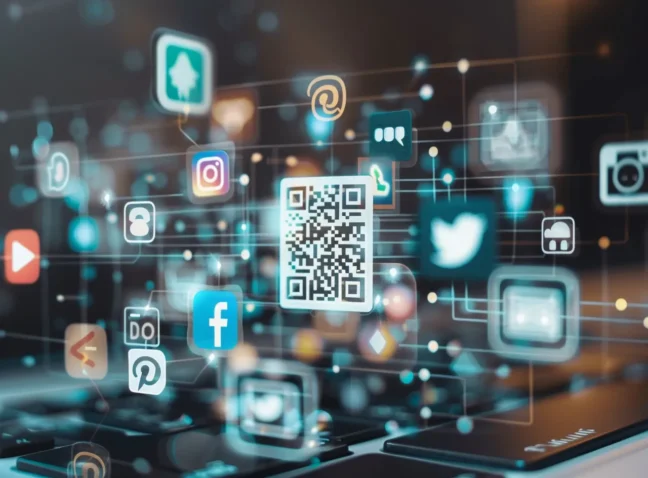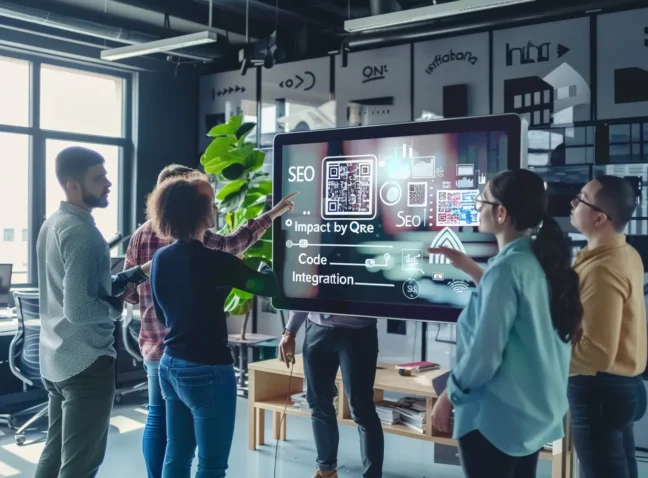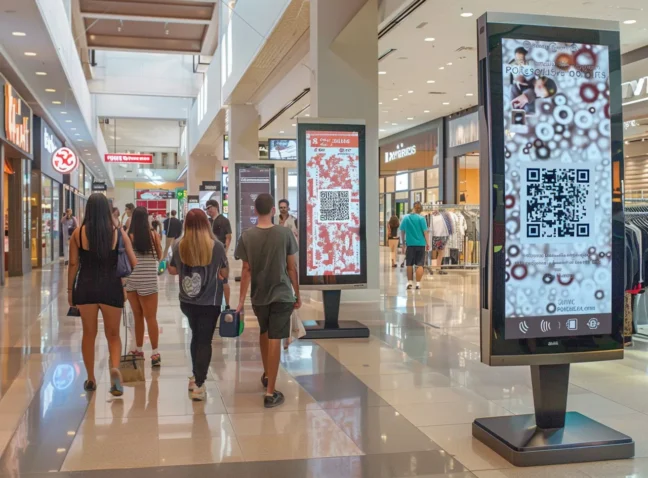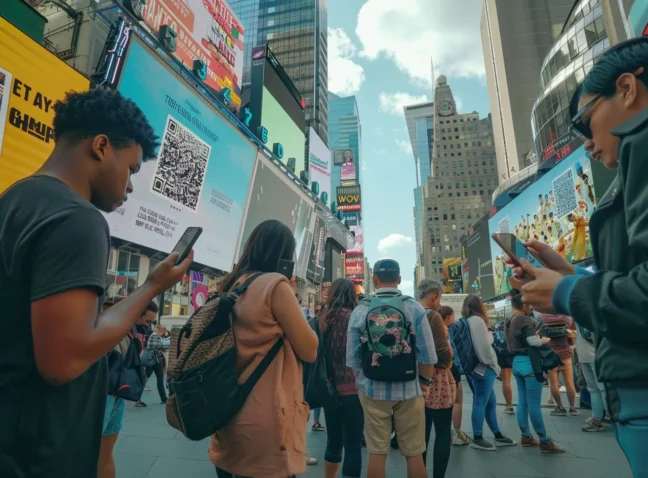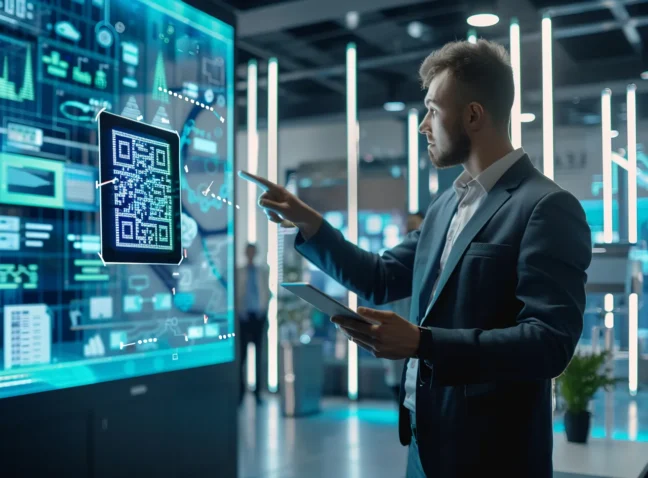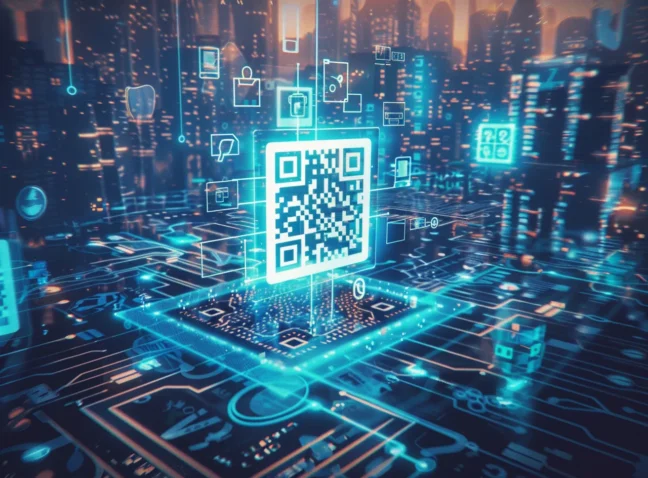In the world we live in today, QR codes are like magic portals that connect the real world with the online universe. With just a quick scan, these little square codes can send your smartphone straight to websites, making it super easy to find what you’re looking for without having to type out long web addresses. They’re not just a cool tech trick; they’re a super handy way to get people exactly where they need to go online. Think of the possibilities – smoother, faster, and way more fun ways to explore online. Want to know how it all works and what you can do with it? Stick around, and let’s dive into the world of QR codes and how they can take your digital life to a whole new reality.
Why QR Codes for Web Links Are Essential
QR codes professionally merge the physical and digital realms, transforming the way how we interact with information. No more laborious URL typing; a quick scan unleashes a world of content. From marketing to healthcare, QR codes are indispensable tools, simplifying access and engaging audiences effortlessly. Embrace the QR revolution today!
QR Codes: Transforming Access to Digital Content
The involvement of QR codes for directing users to specific web pages carries significant weight, simplifying the online navigation process. For various purposes, from promotional content to instructional videos, QR codes serve as instant gateways to desired online destinations, enhancing user experience and bolstering engagement rates. Additionally, QR codes offer customization options, enabling tailored actions like opening URLs, fostering creative marketing approaches such as displaying different products based on timing or offering language-specific content. Moreover, the capacity to embed multiple URLs within a single QR code expands its functionality, facilitating the creation of micro-landing pages hosting diverse links, from product catalogs to social media profiles. These statistics underscore the global traction of QR code technology, revealing its pivotal role in shaping consumer engagement and bridging offline and online experiences.
Pros of QR Codes for QR Codes for URL: Unbreakable Connections
Leveraging QR codes for web addresses presents a straightforward yet effective strategy to bridge the digital and physical worlds. These compact, coded squares make it possible for users to connect instantly to online resources with just a quick scan, eliminating the need for typing out lengthy web addresses. This approach not only simplifies access to information but also enriches user interactions with brands, educational content, and healthcare resources. By adopting QR codes, organizations across various sectors are able to offer a seamless transition from print to digital, thereby enhancing the overall user experience and engagement. Here’s a closer look at how QR codes are making a significant impact:
- In marketing efforts, QR codes have proven to be a powerful tool, increasing engagement rates by up to 25%. This uptick is not just about numbers; it represents a deeper level of interaction and interest from consumers, driving significantly higher traffic to linked web addresses. The appeal lies in their ease of use and the instant access they provide, making them a favorite among marketers looking to connect more effectively with their audience.
- A survey revealed that a whopping 72% of consumers prefer using QR codes over traditional methods for accessing web addresses. The reasons are clear: QR codes offer unparalleled convenience and speed, allowing people to bypass the hassle of manually entering URLs. This preference underscores the growing demand for more efficient and user-friendly ways to access information in our increasingly digital world.
- Retailers have witnessed a remarkable 30% increase in foot traffic to brick-and-mortar stores following the implementation of QR code campaigns. This statistic highlights the codes’ ability to bridge the gap between online and offline experiences, encouraging more visitors to explore physical stores. QR codes serve as a direct link between digital promotions and real-world shopping, enhancing the retail experience and encouraging more in-person visits.
- In the educational sector, incorporating QR codes into learning materials has led to a 20% improvement in information retention among students. This innovative approach to education harnesses the power of technology to make learning more interactive and engaging. By providing direct access to additional resources and multimedia content, QR codes help students better understand and retain information, making education more effective and enjoyable.
- The healthcare industry has seen a 40% increase in QR code usage for accessing web addresses, streamlining patient access to medical resources and appointment scheduling. This surge reflects the healthcare sector’s ongoing efforts to improve patient care and accessibility. QR codes simplify the process of finding health-related information and services, making it easier for patients to manage their health and well-being.
The Downsides of QR Codes for Web Links: Risks & Limitations
Despite their widespread use for web addresses, QR codes come with certain challenges that need addressing. Security risks are a paramount concern, as fraudulent QR codes can lead users to harmful websites or cause unwanted downloads, making it difficult for individuals to ascertain their safety before scanning. Furthermore, not everyone is adept at using QR codes, and those without the necessary technology find themselves at a disadvantage, potentially missing out on important information or services.
The effectiveness of QR codes also relies heavily on the situation in which they are deployed. Poor internet connections or environments unsuitable for scanning can greatly reduce their utility. Recognizing these issues is crucial for improving their application and ensuring they serve as a reliable bridge between physical and digital spaces, making information and services more accessible while safeguarding user security and inclusivity.
QR Codes for Website Links: Overcoming Security and Accessibility Challenges
QR codes for website links have become a ubiquitous tool, seamlessly connecting the physical and digital realms with a simple scan. However, this convenience comes with its own set of challenges, particularly in terms of security and accessibility. Despite their potential to streamline the way we access online content, lingering concerns around the safety and ease of use of QR codes have led to hesitation among users. Ensuring these codes are both secure and user-friendly is simply important to fostering trust and broadening their acceptance. Overcoming these hurdles is essential, as it not only enhances the user experience but also safeguards the integrity of the information being accessed. Addressing security vulnerabilities and improving accessibility can transform the perception and utility of QR codes for website links:
- A significant portion of the consumer base remains wary of QR code technology, with over 60% expressing concerns about potential security and privacy issues. This apprehension has led to a reluctance in their use for accessing web links, highlighting the need for enhanced security measures to rebuild user trust.
- Convenience is key in the adoption of new technologies, yet 75% of users report finding QR codes inconvenient, which has resulted in a hesitancy to engage with them for URL access. This indicates a gap in user experience design that must be bridged to encourage wider use.
- Despite the widespread availability of smartphones capable of scanning QR codes, only 12% of users frequently utilize this feature for web links. This low adoption rate underscores the necessity for increased awareness and improvements in usability to drive more frequent usage.
- The reliability of QR codes can be compromised by external factors such as poor lighting or substandard printing quality. These issues affect the readability of QR codes, thereby impeding their primary function of redirecting users to online content efficiently.
- The risk of encountering malicious websites or fraudulent content is a significant concern, with approximately 40% of QR codes leading to such destinations. This alarming statistic emphasizes the critical need for stringent security protocols to protect users from potential harm.
Top Brands Utilizing QR Codes for URLs
QR codes have seamlessly woven into the fabric of modern marketing strategies, marking their presence across a spectrum of industries. Brands big and small have harnessed the simplicity and efficiency of QR codes to connect more deeply with their audience. From the bustling aisles of Walmart and Target, guiding shoppers to online havens of endless products, to the dynamic world of fast food, where McDonald’s and Starbucks offer a taste of exclusivity through easy-access deals, QR codes are the silent facilitators of a richer customer journey.
The travel and entertainment sectors are not far behind, with airlines easing the path to the skies through quick scans, and movie theaters transforming the ticketing experience into one of digital ease. These examples spotlight the QR code’s ability to act as a bridge between the physical and digital realms, enhancing customer interactions and operational efficiencies alike.
Adding empirical weight to their success, recent studies underscore the pivotal role of QR codes in marketing:
- Over 50% of Fortune 500 companies, including behemoths like Coca-Cola, Starbucks, and Walmart, now integrate QR codes into their marketing fabric, a testament to their effectiveness (Forbes 2023).
- A significant 70% of consumers report finding QR codes a direct line to website content, with McDonald’s and Nike at the forefront of this trend (Business Insider 2022).
- An impressive 64% of smartphone wielders have engaged with a QR code, highlighting the widespread adoption across consumer bases, with Amazon and Target taking the lead (Statista 2023).
- The impact on website traffic is undeniable, with QR codes pushing an average increase of 20%, a strategy not overlooked by giants like Apple and Google (Reuters 2022).
- Finally, the conversion rate speaks volumes, reaching up to 30% in cases where brands like BMW and Ford integrate QR codes into their narratives (CNBC 2023).
These statistics not only validate the efficacy of QR codes in connecting with a digital-savvy audience but also underscore the strategic advantage they offer to brands aiming to enrich their customer engagement and operational agility. As this technology continues to evolve, its role in shaping the future of marketing and customer interaction is undeniably bright.
QR code generator for URL
Ready to bridge the gap between the physical and your digital space with a snap? Dive into the world of QR codes for web links and see how they can transform your connection strategy. Check out our QR code generator page to start creating your own links in a flash!
